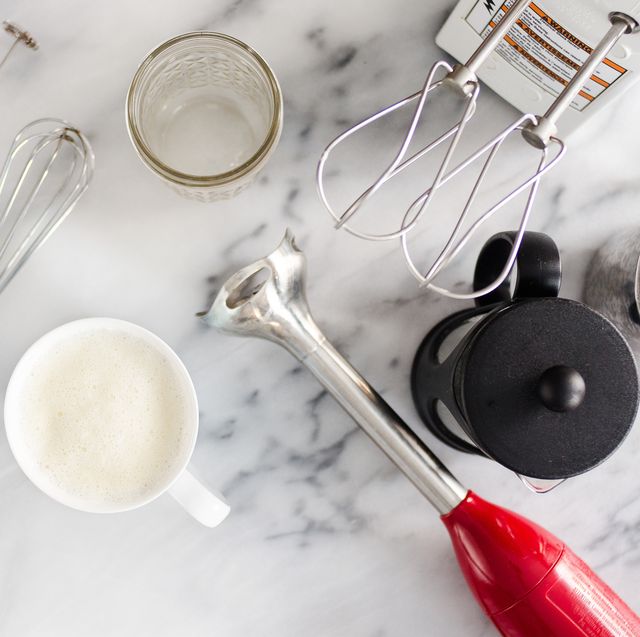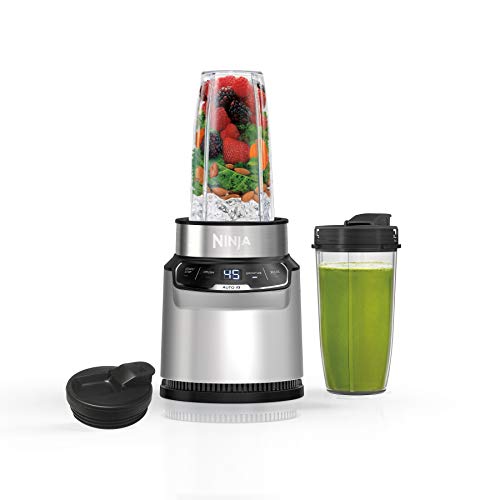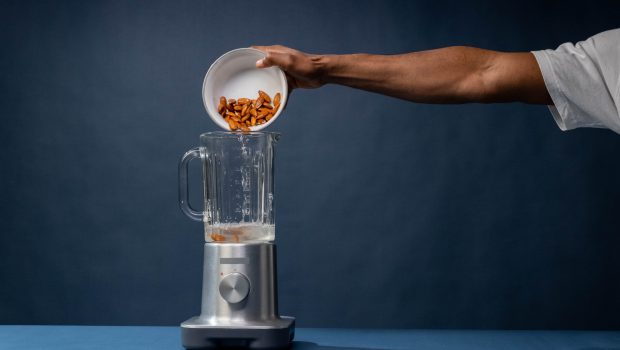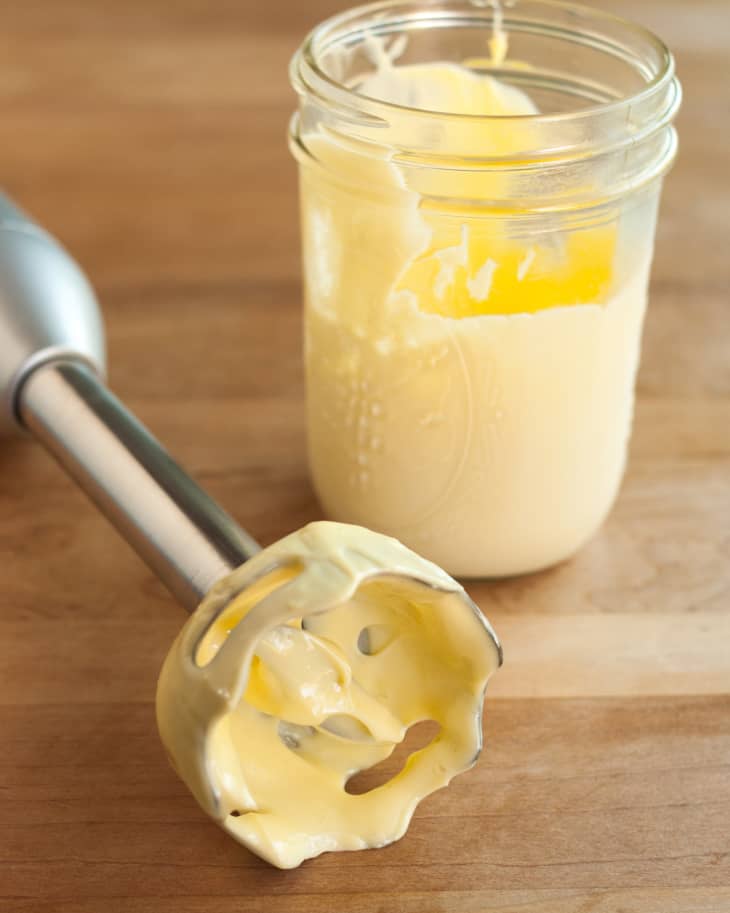Do You Need a Stick Blender to Make Soap? Uncover the Truth!
No, a stick blender is not essential for making soap, but it can speed up the process. Using a stick blender facilitates quicker emulsification, which is blending oils and lye to trace.
Making your own soap is a rewarding DIY project that allows for customization and creativity. Traditionally, soap makers relied on stirring by hand, a technique that is still viable today. While this method is more time-consuming, it offers a gentle and controlled approach to soap making.
For those looking to expedite the process, a stick blender can significantly reduce the time it takes to reach “trace,” which is the point in the soap making process when the mixture becomes thick enough to hold a pattern or “trace” on its surface. The use of this tool can also help ensure a more consistent and thorough blend of ingredients, leading to a smoother final product. Whether you’re making soap as a hobby or starting a small business, understanding the role of a stick blender can help you make the best choice for your crafting needs.

Credit: www.amazon.com
Why Stick Blenders Are Popular In Soap Making
Creating homemade soap is both a science and an art. Stick blenders, also known as immersion blenders, play a crucial role in this creative process. Their popularity among soap makers stems from their ability to combine oils and lye quickly and efficiently. Let’s dive into the specific benefits that make stick blenders a go-to tool for soap enthusiasts.
Speeds Up Emulsification Process
Emulsification is where the magic happens in soap making. It’s the process of transforming oils and lye into soap. Manual stirring can take hours, but a stick blender slashes this time dramatically. By rapidly mixing the ingredients, it helps reach ‘trace’—the point where soap starts to form—in mere minutes. Here’s how a stick blender can make a difference:
- Reduces effort: Say goodbye to arm fatigue from manual stirring.
- Improves production: Make more batches in less time.
- Enhances control: Adjust speed settings for perfect blending.
Ensures A Smooth Consistency
Uneven texture can ruin a batch of homemade soap. Stick blenders excel in creating a homogeneous mixture, free of lumps or separation. Achieving a smooth consistency is essential for:
- Quality end product: A uniform mixture ensures that the soap sets correctly.
- Ingredient distribution: Ensures colorants and fragrances are well-incorporated.
- Appearance: Smooth soap is visually appealing and professional-looking.

Credit: www.amazon.com
Alternatives To Using A Stick Blender
Welcome to the savvy soap maker’s guide! Not everyone has a stick blender. Yet, that should not stop the magic of soap creation. Let’s explore some tried-and-true alternatives that can help achieve similar results in your soap-making adventure.
The Traditional Stir Method
The bygone era favored the classic stir method. This process involves nothing more than an arm, a spoon, and patience. You’ll need:
- Long-handled spoon: Ideally wooden or plastic.
- Sturdy container: For mixing your soap ingredients.
- Time: This method can take a few hours.
To start, combine your oils and lye as usual. Consistent stirring is key, often requiring one to two hours of hand motion. It might be long, but this method gives you a close connection with your craft.
Using A Kitchen Whisk Or Hand Mixer
A kitchen whisk or hand mixer can also double as a soap-making buddy. These alternatives suit small batch crafting nicely. Ensure you have:
- A robust whisk or mixer: With enough strength for thickening soap.
- Steady pace: Prevent soap mixture splattering.
- Batteries or power: If using an electric hand mixer.
Start mixing your soap base. Notice the texture change as you go. You’ll see ‘trace’ quicker than with stirring, in about 20 minutes to an hour.
| Method | Tools Needed | Time Commitment |
|---|---|---|
| Traditional Stir | Spoon, Container | 1-2 hours |
| Whisk / Hand Mixer | Whisk or Mixer, Batteries/Power | 20 minutes – 1 hour |
Remember to keep your gear soap-only to avoid flavor transfer in your kitchen! Both alternatives can yield smooth, creamy soap. Choose based on your batch size, time, and comfort.
Pros And Cons Of Stick Blending
Stick blenders, also known as immersion blenders, are a popular tool in soapmaking. They offer a modern take on the traditional soap-making process. A good stir is key. But does stick blending trump old-school stirring? Let’s explore the pros and cons.
Time Efficiency And Convenience
Using a stick blender can significantly speed up the soap-making process. It reduces the time taken to reach ‘trace’. ‘Trace’ is when soap ingredients emulsify and start to thicken. Here are the benefits of this handy gadget:
- Faster emulsification: Mix oils and lye quickly.
- Consistent texture: Achieve a smoother soap mix.
- More free time: Spend less time stirring.
Stick blenders are not just fast. They’re super easy to use. Just plug in, immerse, and start blending!
Potential For Over-mixing
While stick blenders offer many benefits, over-mixing is a risk. Here are potential drawbacks:
- Acceleration of trace: Too quick and you might rush the process.
- Soap sets too fast: This may limit your design plans.
Be mindful of mixing time. Watch the texture closely. With practice, you’ll find the sweet spot.
Note: Stick blenders are a great choice for many soap makers. They can make the process easy and fast. Yet, they require care to avoid quick saponification. Weigh these pros and cons before deciding if a stick blender is right for you.
Factors Affecting The Necessity Of A Stick Blender
Embarking on the adventure of soap making? You may wonder about the need for a stick blender. Several factors play a crucial role in whether this tool becomes your soapy sidekick.
Soap Making Ingredients
The combination of ingredients can impact mixing needs. Some oils and butters blend easily, while others take longer. A stick blender helps when using:
- Hard oils like coconut or palm
- Stubborn additives like clay or oats
- Thick trace-aimed recipes
For simple, fluid recipes, hand mixing might suffice.
Scale Of Soap Production
Quantity matters. Small batches often need only a spoon. Larger volumes, however, call for a stick blender’s efficiency.
| Batch Size | Mixing Method |
|---|---|
| Under 1 lb | Hand Stirring |
| 1-5 lbs | Stick Blender or Hand Stirring |
| Over 5 lbs | Stick Blender |
Desired Trace Consistency
Achieving the perfect trace is an art. The trace is when saponification starts. Here’s how a stick blender influences trace:
- Thick trace for textured tops: Stick blender speeds up the process.
- Light trace for swirls: Control is key, and a stick blender offers just that.
- Medium trace for layers: Stick blender ensures even consistency.
Without it, reaching the right trace may test your patience and arm strength.
Expert Tips For Beginner Soap Makers
Welcome, aspiring soap makers! Creating homemade soap is an art that combines creativity with practicality. As you embark on this exciting journey, certain tools can make the process smoother. One common question is whether a stick blender is essential. Let’s dive into some expert tips to guide you through your soap-making adventure.
Knowing When To Invest In Equipment
Starting a new hobby requires some initial investment. It’s key to identify which tools are must-haves for your soap-making setup. A stick blender can speed up the saponification process, ensuring a more consistent mixture.
- Consider your budget: Quality comes with a price. Stick to it.
- Frequency of use: Plan to make soap often? Equipment matters more.
- Batch size: Making large quantities? A stick blender could be a necessity.
Common Mistakes To Avoid
Every beginner is bound to make mistakes. Yet, some smart practices can help you avoid the common pitfalls in soap making.
| Mistake | How to Avoid |
|---|---|
| Impatience | Soap needs time to set. Patience yields better results. |
| Excessive Fragrance | Use scents sparingly. The nose knows when it’s too much. |
| Poor Measurement | Be precise. Accurate measurements create perfect bars. |
Remember, learning is part of the process. Even seasoned soap makers started with their first bar. Making mistakes is okay, as long as you learn from them.
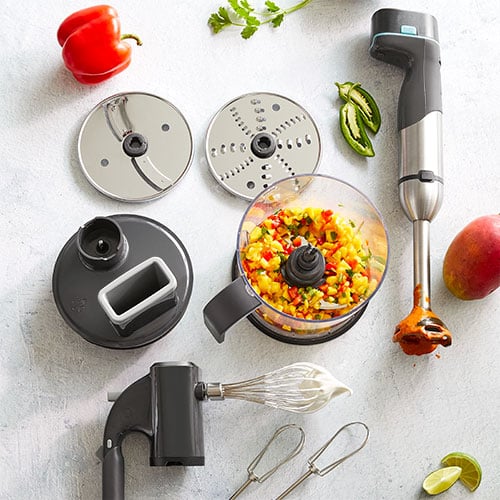
Credit: www.pamperedchef.com
Financial Considerations For Soap Making Hobbyists
When diving into the world of homemade soaps, understanding the costs involved is crucial. Soap making can be a delightful hobby, but it’s important to manage expenses to keep it enjoyable and sustainable. Let’s explore how a stick blender fits into the financial equation and what hobbyists should consider to make cost-effective choices that don’t compromise on quality.
Cost-effective Soap Making
Choosing the right tools plays a big part in soap making. A stick blender can speed up the process, leading to quicker emulsification. This means less time stirring and more time creating. Let’s break down how a stick blender could potentially save money:
- Time Efficiency: Quicker soap production might allow for more batches in less time.
- Energy Savings: Less manual stirring means less physical energy spent.
- Consistent Results: Uniform mixing reduces chances of failed batches, which can waste ingredients and money.
While not essential, a stick blender can be a wise investment for avid soap makers.
Balancing Budget And Quality
Finding a middle ground between cost and quality ensures that both your pocket and your passion for soap making are respected. Consider these points:
| Budget Option | Quality Option | Balance |
|---|---|---|
| Manual stirring | Premium stick blender | Basic model with good reviews |
| Bulk purchasing | High-end ingredients | Buy quality in bulk during sales |
| Simple molds | Custom molds | Durable, reusable molds |
By carefully choosing where to spend, you can make beautiful soaps without overspending. A budget shouldn’t limit creativity. Instead, it should encourage smarter decisions that lead to both beautiful soaps and a balanced checkbook.
Frequently Asked Questions For Do You Need A Stick Blender To Make Soap
Can You Make Soap Without A Stick Blender?
Yes, you can make soap without a stick blender by using traditional hand-stirring methods. However, it will require more time and effort to reach trace, which is the point when the soap mixture thickens and emulsifies.
Is A Stick Blender Essential For Soap Making?
A stick blender is not essential, but it significantly speeds up the soap making process. It helps to achieve trace faster compared to hand stirring, allowing for quicker and more efficient soap production.
What Alternatives Exist For A Stick Blender In Soap Making?
Alternatives to a stick blender for soap making include using a whisk, a spoon, or an electric hand mixer. These can be effective but may take longer to reach trace compared to a stick blender.
How Does A Stick Blender Affect Soap Texture?
Using a stick blender can result in a smoother and more consistent texture in homemade soap. It helps to evenly distribute lye and fats, minimizing the chances of a lumpy or separated final product.
Conclusion
To sum up, a stick blender isn’t a soap-making necessity, but it’s a time-saver for sure. Whether you’re a hobbyist or a pro, consider your batch size and workflow. For creamy, consistent batches without the arm workout, it might just be the tool you need.
Embrace the blend for your next soap creation!


